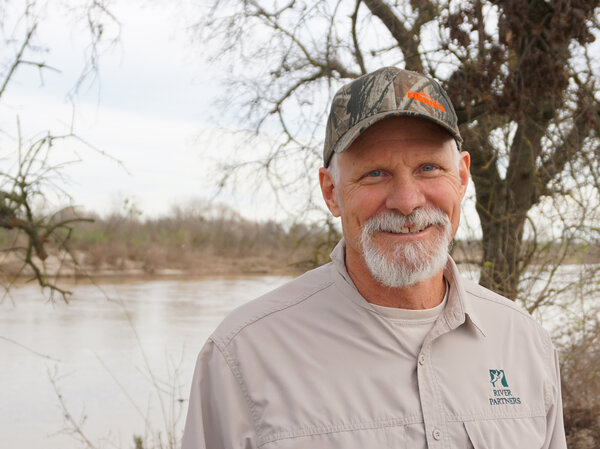
March 29, 2017
After millions of dollars of flood damage and mass evacuations this year, California is grappling with how to update its aging flood infrastructure. Some say a natural approach might be part of the answer.
All the water that poured down spillways at the Oroville Dam in northern California did a lot of damage to the area — and for miles down the river.
“It looks like a bomb’s gone off,” says John Carlon of River Partners, a nonprofit that does river restoration. “That’s what it looks like.”
Carlon is looking at a levee on the Feather River, about an hour south of the Oroville Dam. The earthen levee right on the water has a huge gouge in it.
“You can see this hole that develops and then it just starts eating away,” he says. “And on the other side of that is thousands of acres that would flood if it just eats through that little hole.”
The levees here were hit with a huge amount of water, almost 60 million gallons per minute, during the worst storms in February. So this levee needs repairs, and that’s pretty common for aging infrastructure.
“This levee is at least 80 years old,” Carlon says. “It’s actually old and outdated.”
But all of the damage to these levees, and the needed repairs, has some people calling for a new approach to flood control — one that mimics nature instead of trying to contain it.
And projects like that are happening just down the river.
About eight miles past the damaged levee, the riverbank is covered in cottonwoods, willows and sycamores, and they are caked in mud. The mud line reaches almost over our heads and shows just how high the floodwaters rose. This makes Carlon grin.
“It’s absolutely amazing to see,” he says. “It’s designed to take that.”

Lauren Sommer/KQED
This area is supposed to flood. It used to look like the scenes upstream, where the levees are right next to the river. But a decade ago, after a flood, the levee was moved back by a quarter-mile of so.
Carlon says the change made the space a zone that acts as a floodplain. So, when the river is running high, “the water just spreads out, flows across the whole 700 acres, slows down and has the ability to soak in.”
Giving the floodwater somewhere to go takes pressure off the levees, and with less pressure from all that recent water, the levees here are fine.

Carlon says this is how rivers used to work in California. They’d flood every year. Levees and concrete don’t allow that to happen.
“A natural approach to flood protection is a lot more flexible and resilient,” Carlon says. “Another way to think of this, these are pressure relief valves in the system.”
Those relief valves will become even more necessary with climate change — says Carson Jeffres, a researcher at the University of California Davis Center for Watershed Sciences. Warmer temperatures could make flooding more common.
“There’s always a bigger storm out there and the events are predicted to become more extreme,” Jeffres says.
But moving levees isn’t easy to do. For one, there are cities and towns built right next to rivers.
“You’re not going to displace people,” he says. “That’s the hard thing. So you really have to find those places that are primarily agriculture.”
Restoring floodplains can also be expensive — but maybe not if you look at the big picture.
“It’s interesting how funding restoration is considered expensive but then when disaster happens, all of a sudden it’s relatively cheap,” Jeffres says. “So this is really an investment in our infrastructure to try and minimize costs down the road.”
California is deciding how to spend billions of dollars on improving flood protection infrastructure. A new flood control plan is expected to be finalized later this year, and Jeffres and others hope creating these floodplains is a big part of that.
Lauren Sommer covers environment, water and energy for member station KQED. You can follow her on Twitter @lesommer.
See the original article on NPR.








